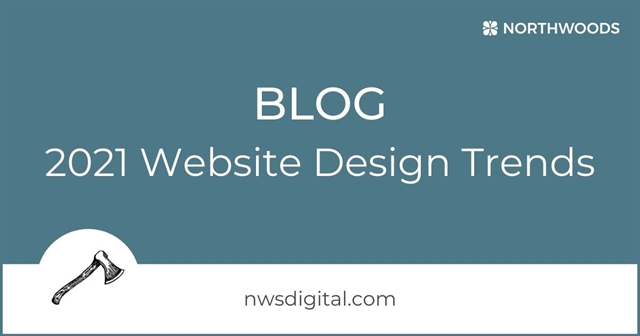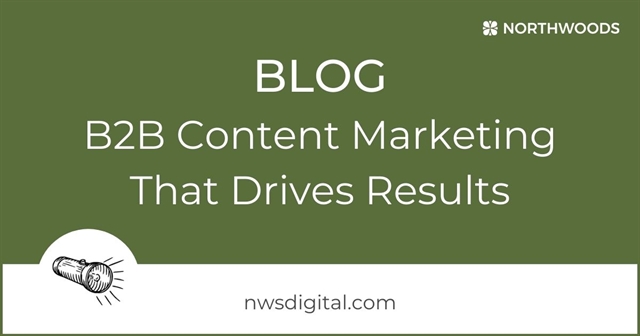By Jim Brophy
December 22, 2020
5 Minute Read
In the 1948 film “The Treasure of Sierra Madre” Humphrey Bogart’s character Fred C. Dobbs poses a question to a Mexican bandit leader named Gold Hat: “If you’re the police, where are your badges?” Gold Hat’s reply: “Badges? We ain’t got no badges. We don’t need no badges. I don’t have to show you any stinkin’ badges!”
Ever since, this iconic scene and line has been repeated and re-used time and again in popular culture and film, often as a variation on that original reply:
- “Nachos? We don’t need no stinking nachos”…from the movie Elephant Parts
- “Badgers? We don’t need no stinking badgers”…from the film UHF
- “Spinach? We don’t need no stinking spinach!”…Backdraft
I know what you’re thinking: “What does this have anything to do with landing pages?”
Well, landing pages have been around for a very long time, too. And, frankly, some of them are being used in a variety of - and at times comical - ways. Some effectively, while many fall short. Before I share best practices for landing pages, let’s examine what a landing page is and why landing pages are important.
What is a Landing Page?
 According to Unbounce, a leader in the landing page space that provides ready-to-use landing page templates, a landing page is a standalone web page, created specifically for a marketing or advertising campaign. It’s where visitors “land” after they click on a link in an email, or ads from Google, Bing, YouTube, Instagram, Twitter, Facebook, etc., or similar places on the web. Unlike web pages, which usually have several goals and encourage exploration, landing pages should be designed with a single focus or goal, commonly referred to as a call-to-action (CTA). It’s this focus that makes landing pages the best option for increasing the conversion rates of your marketing campaigns and lowering your cost of acquiring a lead or sale.
According to Unbounce, a leader in the landing page space that provides ready-to-use landing page templates, a landing page is a standalone web page, created specifically for a marketing or advertising campaign. It’s where visitors “land” after they click on a link in an email, or ads from Google, Bing, YouTube, Instagram, Twitter, Facebook, etc., or similar places on the web. Unlike web pages, which usually have several goals and encourage exploration, landing pages should be designed with a single focus or goal, commonly referred to as a call-to-action (CTA). It’s this focus that makes landing pages the best option for increasing the conversion rates of your marketing campaigns and lowering your cost of acquiring a lead or sale.
Why Use Landing Pages?
A typical web page will contain such necessities as global and utility navigation, search, several goals or pathways a user can choose from, and is by and large less focused on conversion and more about allowing users to explore and engage with content. A web page is loaded with links and navigation to other areas, such as information about your company, team members, editorial content designed for search engine optimization, or social media feeds.
A landing page is laser-focused on a single goal - driving people quickly to one conversion opportunity that increases the likelihood of the visitor taking a desired action, such as subscribing to a blog, downloading a white paper, requesting a contact, or some other form of a call-to-action.
The challenge with using landing pages for most marketers is going about actually building the pages to support their marketing or advertising initiatives. Perhaps they don’t “own” the website and have no control over the structure and/or management of it. Or, their content management system (CMS) doesn’t allow for an easy way to create landing pages without investment of time or resources. Or, they're just not sure what to do. Therefore, the mindset of “We Don’t Need No Stinkin’ Landing Pages” might set in.
Landing Page Best Practices
 There are a variety of landing page tools available, such as Unbounce, Leadpages, Lander and more, that allow marketers to create landing pages separately from their existing CMS. Our own enterprise content management system, Titan CMS, powered by Northwoods, now has the ability to create landing pages regardless of the layouts, templates and theme your instance uses.
There are a variety of landing page tools available, such as Unbounce, Leadpages, Lander and more, that allow marketers to create landing pages separately from their existing CMS. Our own enterprise content management system, Titan CMS, powered by Northwoods, now has the ability to create landing pages regardless of the layouts, templates and theme your instance uses.
But before you go out and create landing pages, let’s review a few best practices to keep in mind.
Match Your Messaging with Your Ads
Not only is it important to match copy and the call-to-action in your ads to the landing page you're driving visitors to, it's also critical to make sure you're not spending money on ads that simply drive users to a product or service page with distracting options; or worse, to your home page.
At Northwoods, we recently developed a campaign targeting users of a competitive CMS who might be frustrated by the cost to upgrade their software, difficulty of managing it, or unreliable implementation partners. As with any digital campaign, we conducted our strategy, developed our value proposition, and then created the ads and the dedicated landing page. We made sure the messaging was consistent in the ads for Google and Facebook, as well as the landing page itself.

Don't Include Navigation
This may seem obvious, but many marketers don't follow this best practice. Make sure your landing page doesn’t have the navigational elements a typical web page contains in order to keep the user focused on the action you want them to take. Note the mobile view below doesn't include any menuing system, such as a traditional hamburger menu, and the desktop version on the right has been stripped of any and all navigational elements. Nothing to distract the visitor from your message and call-to-action.

Measure Your Engagement
It’s easy for marketers to measure the effectiveness of their campaigns without having to invest in pricey subscription tools. Leverage the Google suite of tools – Analytics, Tag Manager, Search Console and Data Studio - to set-up goals/events and determine your conversion rates and ultimately return on investment. Our digital marketing team has published several blog posts on these Google tools and how best to leverage them to gauge the engagement of your campaign. (Check out Eight Pro Tips for Using Google Tag Manager in particular.)
Also, you can track scroll and click patterns of your landing page using a tool like Hotjar. Hotjar allows marketers to place heat maps on landing pages so you can see how far down the page visitors scroll (in case your call-to-action is placed too far below the fold).
Additional landing page best practices include:
- clear and compelling copy
- mobile-first design
- testing and updating your page
- and wherever possible, the use photos and/or video to show your product or service in action
To ensure you're consistently incorporating best practices, we recommend using a landing page template or templates to set you up for success. Different landing page templates can be used based on the type of campaign you're launching and the goals you want to achieve.
Where Can I Get Landing Page Templates?
As I mentioned earlier, there are a variety of landing page tools available, such as Unbounce, Leadpages, Lander and more that allow you to create landing pages regardless of your CMS. However, if you're a Northwoods client, contact us for more information about the landing page templates we offer in Titan CMS and WordPress. We can also help you get you started with your landing pages and assist you in maximizing your campaign success.
So, the next time somebody asks you, “Where are your landing pages?” you can say “Landing Pages? I got my stinkin’ landing pages!”
Related Blog Posts

Keeping your website current can help engage site visitors. Check out this overview of the trends that our designers anticipate shaping the digital design landscape in the year ahead.

One of Northwoods' B2B clients was regularly ranking on the first page of SERPs for several target keywords but averaged bottom-of-the-page rankings. Find out how our team helped them achieve top-of-page results and how you can use our strategies to improve your own rankings.
A list of setup tips for Google Analytics 4 (GA4). Tips cover filters for both hostname and internal traffic; creating custom insights to warn you of low traffic and other anomalies; setting up tracking of search terms entered on your site, etc.